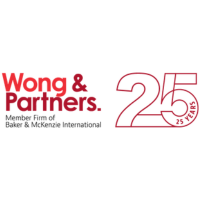

General counsel (legal corporate) | PETRONAS




Goh Han Lee
General counsel (legal corporate) | PETRONAS
What are the most significant cases or transactions that your legal team has recently been involved in?
Due to the vast experiences gained in the construction of the Pengerang Integrated Complex, in 2018 I was appointed as General Counsel to a head a new centre of excellence under Legal Corporate – known as Legal Engineering & Project Delivery (LEPD), where I head a team of lawyers specialising in construction matters to provide legal advice and support for all projects undertaken by Petronas and its group of companies (upstream, downstream, gas and new energy, both domestic and international) together with all supporting activities therefrom.
During the onset of the Covid-19 pandemic in 2020, my team and I conducted key management briefing on how best to position and insulate Petronas projects from the legal pitfalls of delays and cost overruns arising from the pandemic, particularly on issues of force majeure and suspension. This effort resulted in having a proper framework to manage cost overruns and delays in the projects caused by supply chain disruptions and movement controls arising from the pandemic.
With the organisation’s pivot towards renewables, the enterprise is currently focusing on green energy and decarbonization, my legal team will play a key role within group legal in advising and supporting the business, particularly Petronas Group Project Delivery and other stakeholders in their nascent forays into these new frontiers of technology.
With over 20 years of work experience in Petronas, I have had the opportunity to hold multiple managerial and leadership positions within group legal in supporting the business, particularly in the areas of finance, corporate secretariat, construction, project delivery and general corporate legal advisor. During my tenure at legal finance, from 2011 to 2014, I was appointed by the Ministry of Health as Petronas’ representative to the board of visitors of Prince Court Medical Centre. I am also a licensed company secretary and have previously held the position for Energas, Petronas’ captive insurance company. Until recently, I was also the company secretary for Petronas Technical Services and several other technology companies. I currently serve as a management committee member, as well as a leadership team member for various units under Petronas Group Project Delivery unit.
What are some of your main tips for dealing with a crisis?
Understand the issues and what is at stake and what is the ultimate objective, goal and/or outcome, provide proper mandate to crisis head with sufficient flexibility, set up a multidisciplinary team of relevant experts to support, with clear terms or reference and proper chain of command and always ensure effective channel of communication with all stakeholders (including authorities).
What are some of the main trends in the industry sector you work in in Malaysia?
Being involved in the construction sector in Malaysia, I have had the privilege to witness its evolution from the heydays of the 90s where large international contractors were competing for work in large infrastructure and civil works projects to the recent slowdown caused by the Covid-19 pandemic, where the industry suffered heavily due to the movement control orders imposed by the authorities, until the current recovery emerging from the pandemic.
During the last 30 years, I have also seen the growth of contracting standard forms used locally i.e. the PAM from of contract 1969 (common to private sector contracts) and the PWD/JKR203 Form (common to government contracts), to newer versions being developed and used, including standard forms by other stakeholders in the industry i.e. CIDB Standard Form (2000), IEM Conditions of Contract for M&E works. In recent years, I have also seen the local industry familiarising and adopting to FIDIC type of contracts as well. Overall, the construction industry in Malaysia have progressed with increased capabilities and sophistication, as can be reflected in the usage of more complex contracting forms and introduction of new laws.
One of the trends I’ve noticed in the construction industry is the risk appetite at certain periods in time which impacts the contact price greatly. During the 1997-98 Asian financial crisis, the post 9/11 economic downturn and the sub-prime crisis in 2008, not to mention the current Covid-19 and Ukraine war crisis. During such times, I observe that the risk appetite of the contractors is significantly reduced and there is a tendency to excessively price in such risks. The recent situation is an example of a perfect storm – the pandemic resulted in a supply chain disruption, causing price volatility for certain items, now as the market is emerging from the pandemic, the situation is further exacerbated by the further shortages and disruptions caused by the Ukraine war.
What are some of the main legislative or regulatory changes that have impacted you?
Construction industry payment and adjudication act 2012 (CIPAA) – this legislation is similar to those already established in the UK and other jurisdictions on payment disputes in construction contracts between main contractor and sub-contractors, granting relief to sub-contractors who have not been paid a recourse to direct payment from the project owner. As the NOC, we tried applying for exemption for our upstream contracts but were unsuccessful. We were informed that given the criticality of the problem of sub-contractors not getting paid on time, the authorities wanted the law to apply across the construction industry.
Historically, most of the construction sub-contracts in Malaysia had a “pay when paid” clause meaning that the main contractor would only pay the sub-contractor once it receives payment from the owner. This often results in long payment lead times for small trade sub-contractors whom tight cashflow literally meant living from “hand to mouth”. This is further aggravated by the main contractors abusing this arrangement to often force the sub-contractors to take a haircut on monies due and payable to them. This had become a perennial problem for the industry, prompting the concerns raised by various stakeholders for a solution. Being made aware of the grievances of the sub-contractors and the industry, the authorities even as far back as the late 90s attempted to pass legislation to address this issue. Given the various competing interest in the industry, it took a long time for this law to come into effect. This law finally came into effect in 2012, after a long contentious consultation between various stakeholders.
Essentially, CIPAA provides for a cheap and quick 90-day adjudication process for a sub-contractor to claim against the main contractor for unpaid monies in a construction contract, failing payment after obtaining the adjudication order against the main contractor, the sub-contractor may seek payment direct from the owner, provided that there are monies due and payable to the main contractor under the contract. The adjudicators are mostly lay persons from the construction industry, the appointment is made and regulated by the AIAC.
Hence, given that our organisation was not exempted from CIPAA, I had incorporated various notice provisions in our construction contract to manage the impact and implication of having such a law. So, whenever a dispute in payment arises, there is an obligation for the contractor to notify, to enable Owner to further enquire and intervene where possible to prevent further escalation of payment dispute and resulting delays. Although the intent may be noble in securing the interest of the sub-contractors, there were some initial concerns that this law would lead to the opening of floodgates of claims from sub-contractors. However, with the development of a body of case laws on CIPAA since and the timely intervention of owners, this fear has been unfounded to date.